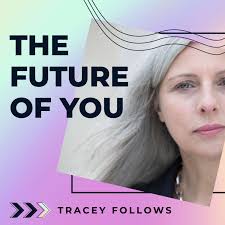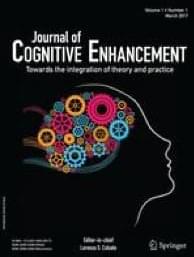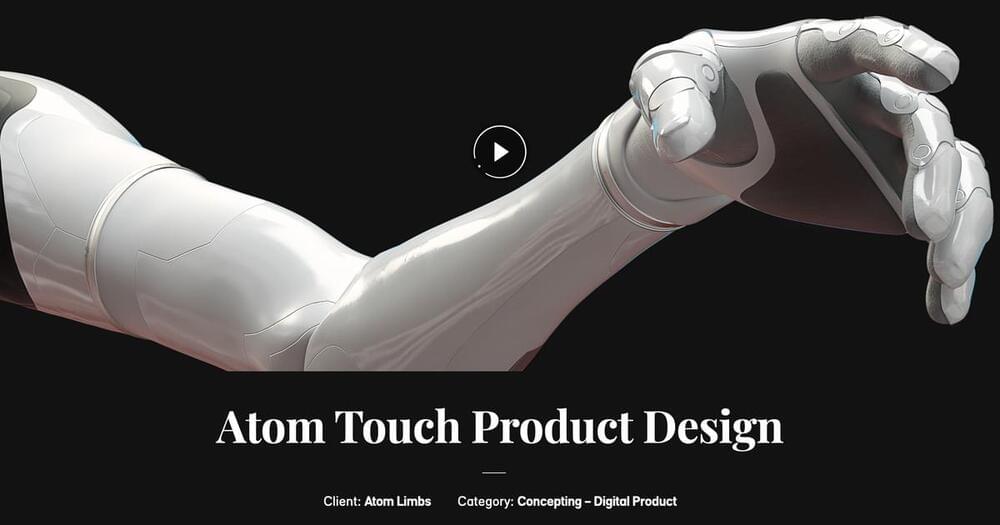For COVID-19 sufferers who have lost their sense of smell there is the promis of a future bionic nose.
Researchers at Virginia Commonwealth University are building a neuroprosthetic to help those who lose their ability to smell.


Do we need a new criteria for death, that covers the technicalities around neuro preservation, issues of legal identity upon reanimation and an approach to rehabilitation? What are the misunderstandings or misinformation that surround transhumanism and endeavour to make the distinction between transhumanism and technocracy? Should we be worried about the wrong headedness of The Population Bomb, climate catastrophism and the fashionability of long termism?
Today, I speak with Max More. As some of you may already know, Max is considered to be the founder of modern transhumanism, a philosopher and futurist who writes extensively on technology and humanity. He’s also currently ambassador and President Emeritus at Alcor Life Extension Foundation, having served almost 10 years as President and CEO there, and having been its 67th member. His 1995 University of Southern California doctoral dissertation, ‘The diachronic self identity continuity and transformation’, examined several issues that concern transhumanists, including the nature of death. He is the Co-editor of Rhe Transhumanist Reader, and he’s written many articles on transhumanism and extropianism, including the 1990 essay, ‘Transhumanism: toward a futurist philosophy’, in which he introduced the term transhumanism, in its modern sense.
This episode of The Future of You covers:
https://youtube.com/watch?v=VFeWQCpAeek&feature=share
“Transhumanism” — The intellectual and cultural movement that affirms the possibility and desirability of fundamentally improving the human condition through applied reason, especially by developing and making widely available technologies to eliminate aging and to greatly enhance human intellectual, physical, and psychological capacities. — whatistranshumanism.org.
“…I suppose I’ve been looking for Eden all my life. I think we all have. And I think that primeval communion between humanity and the rest of life did exist once, and perhaps still does in some pockets. But it is not available to modern people except in memory or longing. And the search can be damaging if it distracts you from the fact that, whatever horrors humanity unleashes, the world is still a wonder if we can just get out of our anxious minds long enough to see it. Which is easier written than done.
Both sides in the argument that runs through Alexandria my latest novel —nature versus culture, body versus mind, human versus machine—find that their worldview has holes in. That’s part of the point, I think. Our world is being eaten by this great, terrible machine, but the machine is a manifestation of us.
If my worldview has changed it is only to reveal to me that any “enemy” we might have is lodged firmly in each of our hearts, and that there is nowhere to escape to that doesn’t lead through it.”
About the Lecturer.
Paul Kingsnorth is an Orthodox English writer and thinker who lives in the west of Ireland. He is a former deputy-editor of The Ecologist and a co-founder of the Dark Mountain Project.
Kingsnorth’s nonfiction writing tends to address macro themes like environmentalism, globalisation, and the challenges posed to humanity by civilisation level trends. His fiction tends to be mythological and multi-layered.
Paul Kingsnorth’s debut novel, The Wake, won the 2014 Gordon Burn Prize and the Bookseller Book of the Year Award, as well as being longlisted for the Man Booker Prize, the Folio Prize and the Desmond Elliott Prize, and shortlisted for the Goldsmiths Prize. Beast, the second book in his Buckmaster Trilogy, was shortlisted for the RSL Encore Award 2017. He is also the author of the non-fiction books One No, Many Yeses, Real England, Confessions of a Recovering Environmentalist and Savage Gods, as well as two poetry collections, Kidland and Songs from the Blue River.

Maybe the science is finally catching up with BioViva CEO Elizabeth Parrish.
As a therapeutic approach, however, gene therapy suffers somewhat from the undue weight of exuberant expectations. For years people have speculated about applications going beyond restoration of lost body function and into biological enhancement, such as longevity. Some now categorize gene therapy as belonging to the realm of transhumanism—the use of medical and surgical interventions to enhance the body, or give it extra capabilities, as opposed to treating things that go wrong.
Ben Goertzel converses with Hugo de Garis on his transhumanist argument for the reality of a Creator.
BEN GOERTZEL: Hugo, you’ve recently published an article on KurzweilAI.net titled “From Cosmism to Deism”, which essentially posits a transhumanist argument that some sort of “God” exists, i.e. some sort of intelligent creator of our universe – and furthermore that this “creator” is probably some sort of mathematician. I’m curious to ask you some questions digging a little deeper into your thinking on these (fun, albeit rather far-out) issues.
The Transhumanist FAQ was developed in the mid-1990s and in 1998 became a formal FAQ through the inspirational work of transhumanists, including Alexander Chislenko, Max More, Anders Sandberg, Natasha Vita-More, Eliezer Yudkowsky, Arjen Kamphius, and many others. Greg Burch, David Pearce, and Anders Sandberg kindly offered extensive editorial comments. The presentation in the cryonics section was, and still is, directly inspired by an article by Ralph Merkle. Ideas, criticisms, questions, phrases, and sentences to the original version were contributed by (in alphabetical order): Alex ([email protected]), Brent Allsop, Brian Atkins, Scott Badger, Doug Bailey, Harmony Baldwin, Damien Broderick, Greg Burch, David Cary, John K Clark, Dan Clemensen, Damon Davis, Jeff Dee, Jean-Michel Delhotel, Dylan Evans, [email protected], Daniel Fabulich, Frank Forman, Robin Hanson, Andrew Hennessey, Tony Hollick, Joe Jenkins, William John, Michelle Jones, Arjen Kamphius, Henri Kluytmans, Eugene Leitl, Michael Lorrey, [email protected], Peter C. McCluskey, Erik Moeller, J. R. Molloy, Max More, Bryan Moss, Harvey Newstrom, Michael Nielsen, John S. Novak III, Dalibor van den Otter, David Pearce, [email protected], Thom Quinn, Anders Sandberg, Wesley R. Schwein, [email protected], Allen Smith, Geoff Smith, Randy Smith, Dennis Stevens, Derek Strong, Remi Sussan, Natasha Vita-More, Michael Wiik, Eliezer Yudkowsky, and [email protected].
Over the years, this FAQ has been updated to provide a substantial account of transhumanism. Extropy Institute (ExI) was a source of information for the first version of the Transhumanist FAQ, version 1.0 in the 1990s. The Transhumanist Manifesto, conceived by Natasha Vita-More in 1983 and revised in 1998–2020 to include advances of the growing worldview, was published in the CD placed onboard the Cassini-Huygens spacecraft in its mission to Saturn.
Humanity+, also known as WTA, adopted the FAQ in 2001 and Nick Bostrom added substantial information about future scenarios. With the contributions of close to hundred people from ExI, Aleph, DeTrans, Transcedo, WTA, and the UK Transhumanist Association, new material has been added and many old sections have been substantially reworked. In the preparation of version 2.0, the following people have been especially helpful: Eliezer Yudkowsky, who provided editorial assistance with comments on particular issues of substance; Dale Carrico who proofread the first half of the text; and Michael LaTorra who did the same for the second half; and “Reason” who then went over the whole document again, as did Frank Forman, and Sarah Banks Forman. Useful comments of either substance or form have also been contributed by (in alphabetical order): Michael Anissimov, Samantha Atkins, Milan Cirkovic, José Luis Cordeiro, George Dvorsky, James Hughes, G.E.
The users can effectively manipulate the prosthetics exactly like they would with an intact limb.
University of Utah researchers have developed the most advanced AI-powered prosthetics “ever created,” prompting Ottobock, the world’s largest prosthetic manufacturer, to collaborate with them to launch the project globally.
“Our @LabBionic [Bionic engineering lab] has developed the “Utah Bionic Leg,” the most advanced bionic leg ever created. Now, we’ve forged a partnership with the worldwide leader in the prosthetics industry, @OttobockUK, to bring it to individuals with lower-limb amputations,” the university’s official account tweeted on Friday.
The University of Utah has developed the most advanced AI-powered prosthetics “ever created,” prompting Ottobock, the world’s largest prosthetic manufacturer, to collaborate with them to launch the project globally.
This video is the 1st of a series of “What is Aging” webinars that aims to unravel what aging is, how we age, why we age, and how to reverse it.
We welcome Jason C. Mercurio, MFE, Dr. Jose Cordeiro, and Dr. Ian Hale to discuss the topic.
Thanks to our transhumanist influencers including:
@G. Stolyarov II @Ray Kurzweil 2017 @The Singularity is Near.
#ageless #agelesspartners #agereveal #longevity #biohacking #biotechnology #agingbackwards.
Book a coaching session with an Ageless Coach today:
https://agelesspartners.com/ageless-coaching/
Live long and age less!

Since the beginning of human storytelling, enhancing oneself to a “better version” was of vital interest to humans. A twenty-first century-philosophical movement called transhumanism dedicated itself to the topic of enhancement. It unites discussions from several disciplines, e.g. philosophy, social science, and neuroscience, and aims to form human beings in desirable ways with the help of science and technology (Bostrom, 2005; Loh, 2018; More, 2013). Enhancement is the employment of methods to enhance human cognition in healthy individuals (Colzato et al., 2021), thereby extending individual performance above already existing abilities. It should thus be distinguished from therapy, which is the application of methods to help individuals with illnesses or dysfunctions in restoring their abilities (Viertbauer & Kögerler, 2019). Although enhancement methods bear psychological implications, there is hardly any psychological research on them. However, as the use of enhancement methods has increased (Leon et al., 2019; McCabe et al., 2014), and with it the demand for official guidelines (Jwa, 2019), it is necessary to examine who would use these methods in the first place, especially because these technologies can easily be misused. Investigating personality traits and values of individuals who want to enhance themselves could not only support suppliers and manufacturers of enhancement technologies in creating guidelines for using enhancement, but also raise more general awareness on which individuals might be in favour of enhancement.
In previous studies investigating the intersection between enhancement and personality traits or values, vignettes were used to describe enhancement methods and to measure their acceptance among participants (e.g. Laakasuo et al., 2018, 2021). Thus, subjects were asked to read scenarios involving the use of a certain enhancement method and then—as a measure of acceptance—judge aspects (e.g. the morality) of the action undertaken in the corresponding scenario (e.g. Laakasuo et al., 2018, 2021). In the present study, we followed a similar vignette-based approach with a variety of different enhancement methods to investigate the link between the acceptance of enhancement (i.e., the willingness to use enhancement methods, hereinafter termed AoE), personality traits, and values. More specifically, we examined the acceptance of the most discussed cognitive enhancement methods: pharmacological enhancement, brain stimulation with transcranial electrical stimulation and deep brain stimulation, genetic enhancement, and mind upload (Bostrom, 2003; Dijkstra & Schuijff, 2016; Dresler et al., 2019; Gaspar et al., 2019; Loh, 2018).
Pharmacological enhancement has received much attention in the media and literature (Daubner et al., 2021; Schelle et al., 2014) and is defined as the application of prescription substances that are intended to ameliorate specific cognitive functions beyond medical indications (Schermer et al., 2009). The best-known drugs for cognitive enhancement are methylphenidate (Ritalin®), dextroamphetamine (Adderall®), and modafinil (Provigil®), which are usually prescribed for the treatment of clinical conditions (de Jongh et al., 2008; Mohamed, 2014; Schermer et al., 2009).

March 10, 2022 Benzinga — This Startup Is Creating The World’s First Mind-Controlled Prosthetic Arm — Last Call To Invest
March 10, 2022 Yahoo — This Startup Is Creating The World’s First Mind-Controlled Prosthetic Arm — Last Call To Invest
March 2, 2022 Interesting Engineering — A new artificial human arm is moving prosthetics one step closer to true bionics.